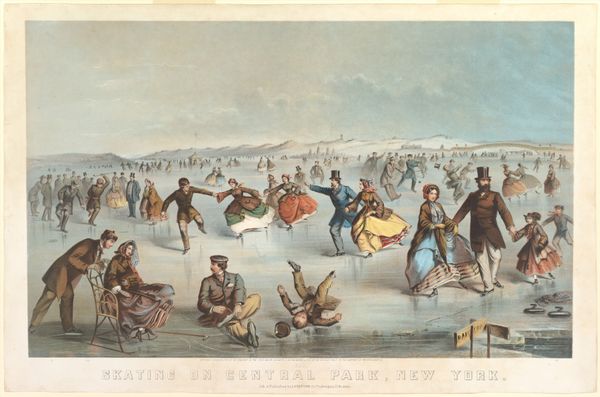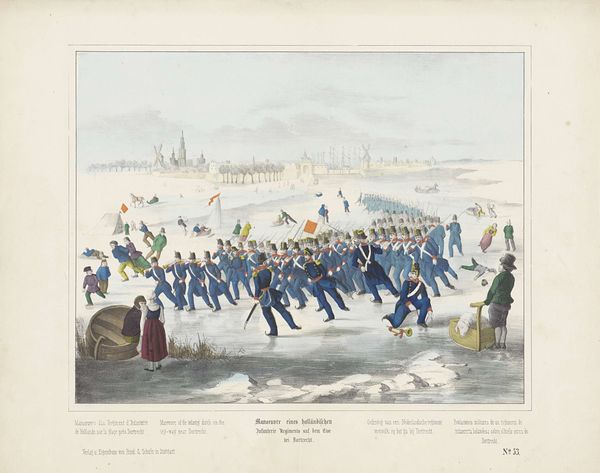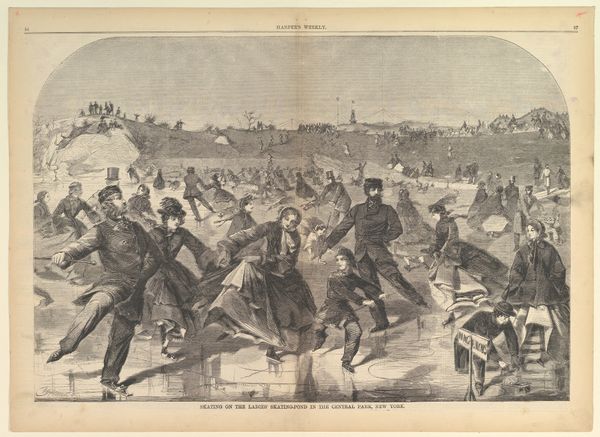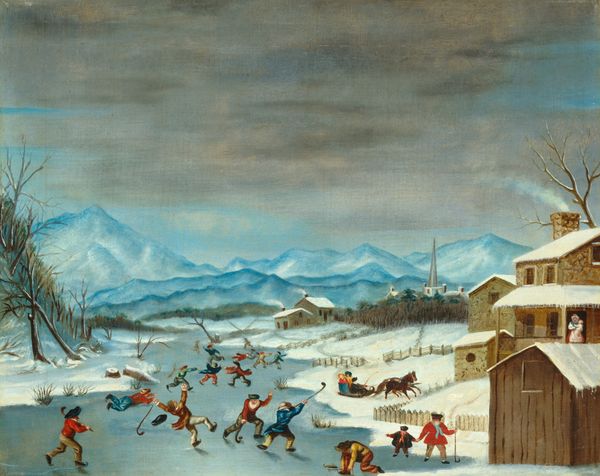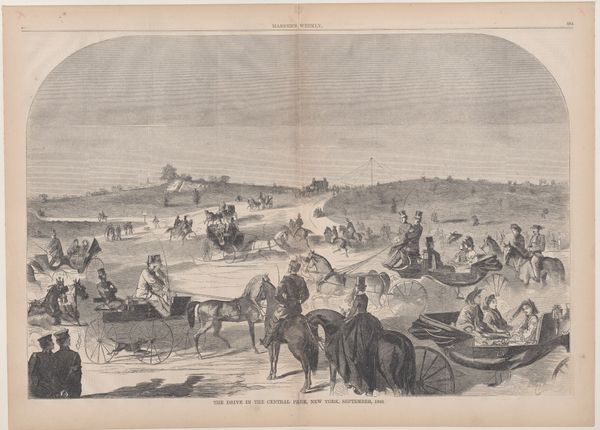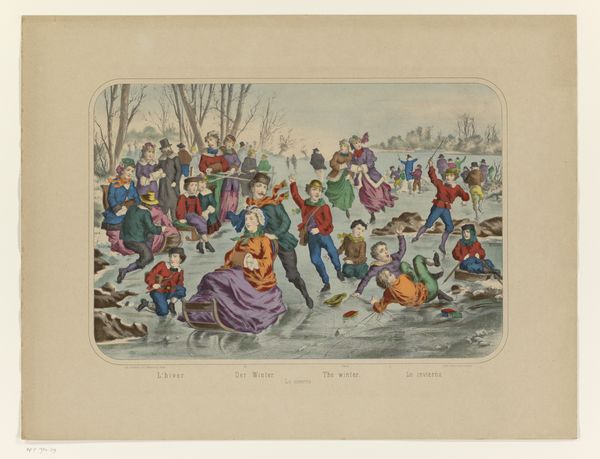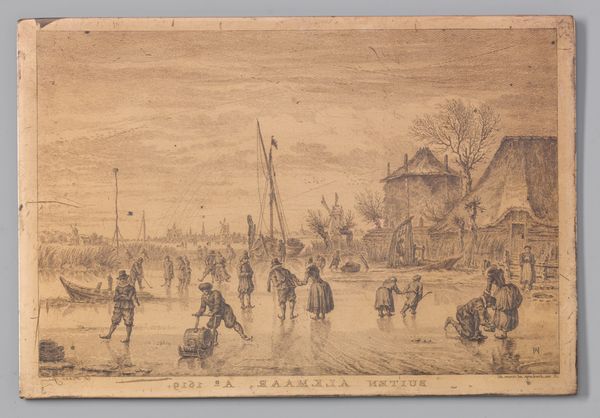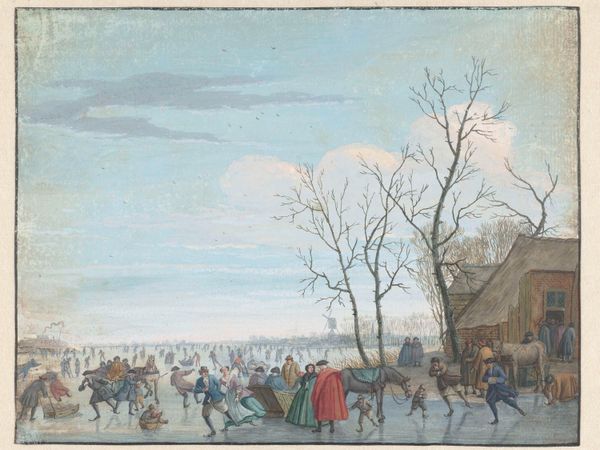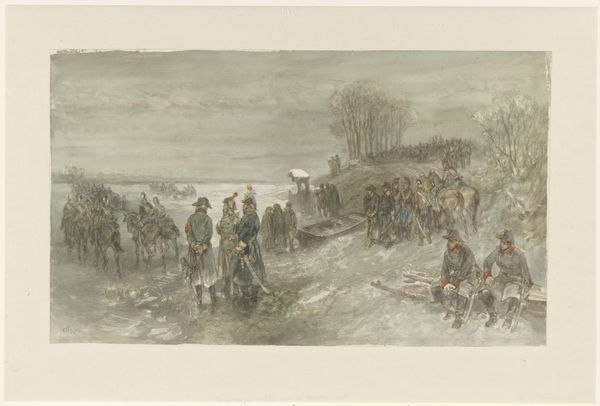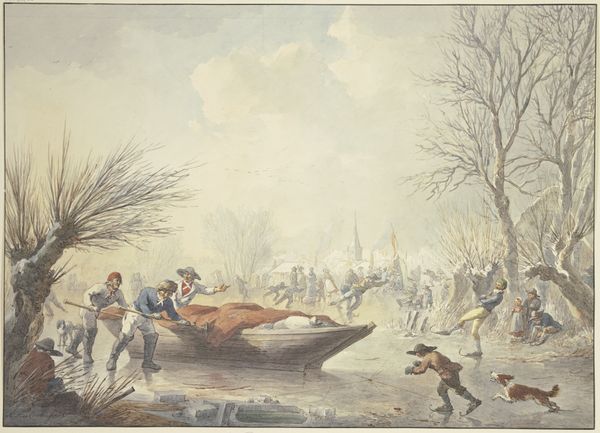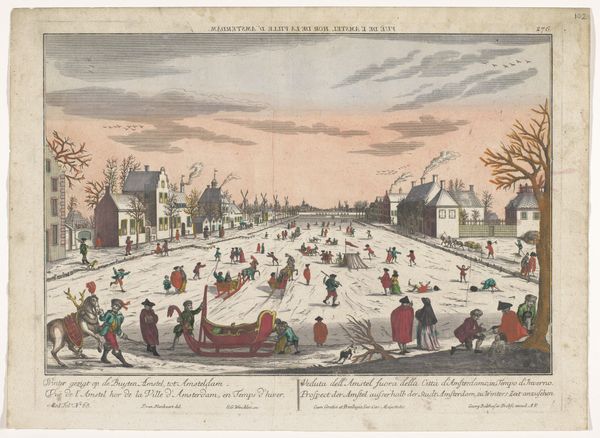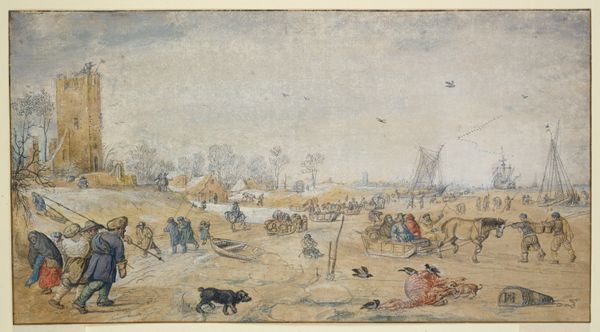
Dimensions: Image: 18 1/8 × 26 9/16 in. (46 × 67.5 cm) Image and text: 20 3/16 × 26 9/16 in. (51.3 × 67.5 cm) Sheet: 22 × 30 in. (55.9 × 76.2 cm)
Copyright: Public Domain
Curator: Oh, it makes me think of Bruegel, this teeming sense of human activity on ice. Is that Parsons? What do you see? Editor: Indeed! This is "Central Park, Winter – The Skating Pond," a print produced by Charles Parsons around 1862. My immediate reaction is a sense of constructed leisure. These aren't just folks amusing themselves—it’s about performative bourgeois identity within a carefully curated public space. Curator: I adore that curated observation. But there's something so beautifully optimistic about it, no? All bundled up against the chill, whizzing on steel blades, embracing winter... Doesn't it make you feel almost ridiculously alive? And, look at the fallen man! How delightfully slapstick, but the overall effect is to celebrate that communal, innocent joy. Editor: Well, innocent-ish. Central Park itself was designed in part to provide a moral and social safety valve in response to the class anxieties of a rapidly industrializing New York. Consider who this landscape *excludes*, as well as includes. Was that ‘innocent joy’ available to all? These skating scenes tended to portray primarily white middle- and upper-class individuals, creating a kind of visual mythology around social harmony in the city that likely didn't reflect reality. Curator: You're not wrong to raise those vital questions, of course. But just looking at it purely aesthetically for a moment - there’s such narrative detail. It is quite charming, like individual stories caught mid-motion on ice. The very fact it is print, implies distribution. Editor: Yes, precisely. The choice of printmaking allowed for the widespread dissemination of this imagery and these values. It's about crafting and circulating a very specific image of New York, of Americanness. And romanticism! It's really trying hard. It places a very clear narrative emphasis on how civic life ought to play out. Curator: Hmm, still, I can’t deny it stirs a certain sentimentality in my soul – despite my knowledge of those socio-economic limitations. Perhaps this idealized perspective makes the desire for unity that much stronger? Editor: Perhaps. Art, like history, presents multiple truths simultaneously. We can appreciate the technical skill and the aspirational vision, while remaining vigilant about the silences and exclusions embedded within it. That's the joy of experiencing the old masters through contemporary awareness!
Comments
No comments
Be the first to comment and join the conversation on the ultimate creative platform.
